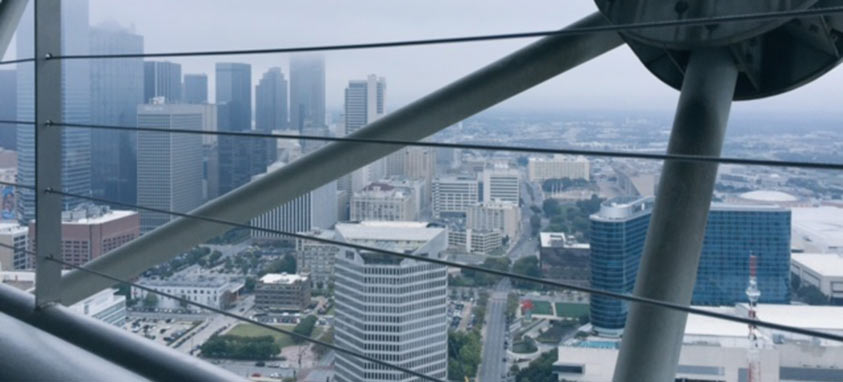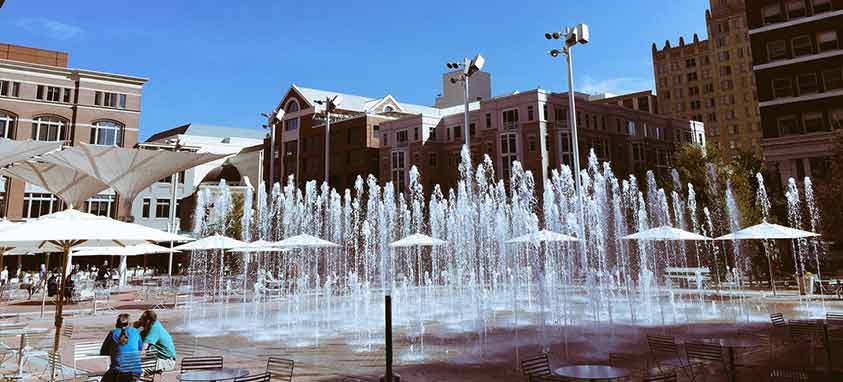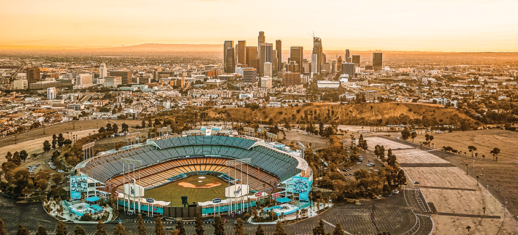The Dallas-Fort Worth Metroplex is an intersection of cosmopolitan sophistication and bonafide cowboy culture best experienced in these two metropolitan cities. Millions of visitors pass through Dallas-Fort Worth International Airport (DFW), one of the busiest airports in the world, to encounter cattle runs, Western saloons and rodeos. Once there, however, they come to find that there is more to Texas than tall tales of the Wild West. These days, Dallas and Fort Worth are honoring their roots while embracing the new, and meeting groups can come along for the ride.

Begin a tour of Dallas at one of the tallest points in the city atop the GeO-Deck at Reunion Tower. The 470-foot-tall spherical structure provides 360-degree views of Dallas proper, including the striking Margaret Hunt Hill Bridge with its white double-curved arches that run across the Trinity River. Groups can buyout the observation deck including Five Sixty, an award-winning Asian-fusion fine dining restaurant with floor-to-ceiling windows and equally spectacular views.

Next door, the Sixth Floor Museum takes visitors back to a fateful day on November 22, 1963, when President John F. Kennedy was assassinated below the building in Dealey Plaza. What was once the Texas School Book Depository has become a space dedicated to the life and legacy of America’s 35th president. Guided audio tours of exhibits and artifacts spread across the sixth and seventh floors are available to the public. The museum also serves as a historic setting for events with 1,800 sq. ft. of space at the visitor’s center and 5,000 sq. ft. of space on the seventh floor.

Dallas Museum of Art is the core city’s art district, the largest in the nation, spanning 19 blocks of museums, performance halls, theaters and community spaces. The museum was established in 1903, long before the surrounding district, and holds more than 23,000 works spanning 5,000 years of history. Most of the halls, featuring European, Asian, American and Modern masterpieces are available to view with no admission cost, except for rotating exhibits such as Divine Felines: Cats of Egypt, on display until Jan. 8. The museum is also an exquisite event venue with 67,100 sq. ft. of space split between the auditorium, atrium, sculpture garden and outdoor plaza.

In nearby Frisco, one of the fastest growing suburbs in the country, the talk of the town is the new Dallas Cowboys World Headquarters at The Star. The gleaming practice facility for the NFL team is a 91-acre campus that offers myriad event spaces, restaurants, shops and the Omni Frisco Hotel that’s scheduled to open next summer. The Ford Center is a state-of-the-art 510,000-square-foot stadium that will host community football games and events overlooking the practice field when not in use by the Dallas Cowboys. Tours of the facility will begin in January, providing a one-of-a-kind fan experience to the public.

Fort Worth is where several only-in-Texas memories can be made. The historic army outpost, which sits on the Trinity River, was part of a network of 10 forts designated to safeguard the American Frontier following the end of the Mexican-American War in 1849. After it became a stop on the Chisholm Trail, the cattle trade and stockyards took hold of the city, and it became the center of the ranching industry earning Fort Worth the nickname Cowtown.
With the cowboys came boom times, however it also led to the city’s fair share of problems. After merchants stocked up on provisions, they headed to local saloons, dance halls and brothels in Fort Worth’s red light district. It became known as Hell’s Half-Acre—no thanks to the motley crew of brawlers, hunters, crooks, robbers and outlaws that took up residence near the old Union Station train depot.

Acre Distilling Co. keeps these bawdy tales alive in a restored 1920s building that was once the site of drunken brawls and general debauchery. Owner Tony Formby hangs a photograph of the Sundance Kid, Butch Cassidy and the Wild Bunch in the entrance, a replica of one of the earliest mugshots that eventually led to their capture. Patrons can sip on spirits distilled onsite, including single-barrel select bourbon whiskey, straight bourbon whiskey, dry gin and vodka made with various infusions. A cafe by day and bar by night, the venue can be bought out for private events of up to 50 people; up to 30 people can tour the distillery.
Fort Worth Convention Center is located less than one block away from the distillery, with entrances facing downtown and Sundance Square, a 35-block district of boutiques, restaurants, theaters, galleries and historic landmarks. The convention center embraces its Lone star spirit with state emblems and cowboy themes represented in artwork, carpeting and even the ceiling. There is more than 250,000 sq. ft. of exhibit space for various groups, including a 28,160-square-foot ballroom, 55,000-square-foot plaza and a dome-shaped arena with a seating capacity for up to 12,918.
According to Charles Mayer, director of sales and marketing for the convention center, the building will eventually undergo a renovation and expansion by 2024. An enlarged footprint would replace the arena with additional exhibit space and another 50,000-square-foot ballroom, with the ability to host two large concurrent groups on either end of the convention center. The Omni Fort Worth headquarters hotel offers 400,000 sq. ft. of additional meeting space and 614 guest rooms. Next year, a 254-room Hampton Inn & Suites will join the number of nearby hotels.

Cap off the evening with a visit to the Stockyards, where riding and roping are a regular occurrence. Twice a day, drovers lead a herd of cattle down Exchange Avenue, between the Fort Worth Exchange Building and then back to the holding pens. The National Historic District was the heart of the livestock industry when the Fort Worth Union Stockyards started business in the late 1800s. Cows, sheep and pigs were bought, sold and slaughtered until the 1950s.

The area retains its Western heritage in places such as Billy Bob’s Texas, a working rodeo and live music venue where famous country musicians including Blake Shelton, Waylon Jennings, Janie Fricke and Willie Nelson have performed. The 100,000-square-foot honkytonk and bull-riding arena offers a quintessential experience of Texas under one roof, and can host up to 6,000 people for special events.




